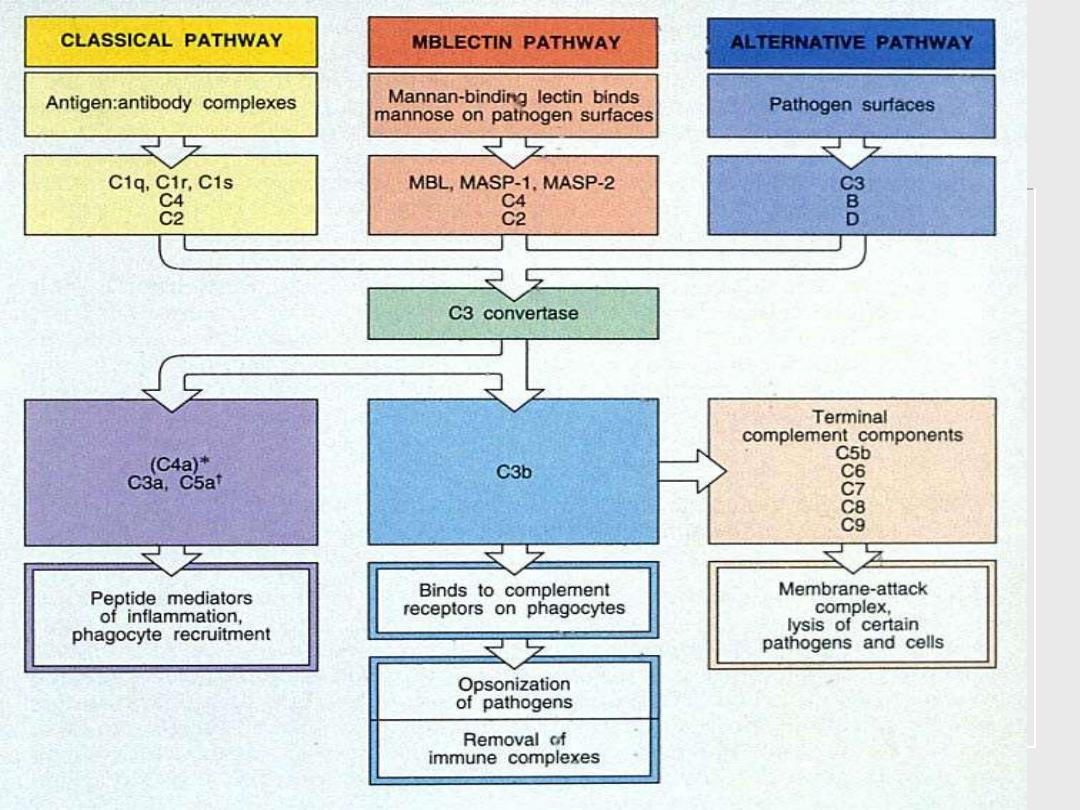
Dr Mohammed Al- ani

THE COMPLEMENT SYSTEM
OBJECTIVES: When you finish this section, you
should be able to:
1. Describe the effects of complement activation.
2. Outline the Classical, Mannan-Binding (MB)
Lectin and
Alternative pathways of complement activation,
including their activators.
3. Discuss the major regulatory points in
complement activation and the consequences of
deficiencies in complement or complement
regulators.
4. Discuss the functions of the various
complement receptors.
5. Discuss the biologic activities of complement and identify the
components involved
.

Complement: History
Discovered in 1894 by
Bordet
It represents lytic activity
of fresh serum
Its lytic activity destroyed
when heated at 56C
for 30 min

COMPLEMENT
ƒ
Complex series of plasma proteins (C1-C9).
ƒ
Heat labile (inactivated at 56 C for 30 min).
ƒ
Synthesized in vivo by liver macrophages,
hepatocytes and intestinal epithelia.
ƒ
C3 is most abundant (1g/L of plasma) and
important complement component.
ƒ
Plays a major role in innate and adaptive
immunity
.

Complement functions
• Host benefit:
– opsonization to enhance phagocytosis
– phagocyte attraction and activation
– lysis of bacteria and infected cells
– clearance of immune complexes
– clearance of apoptotic cells
• Host detriment:
– Inflammation, anaphylaxis
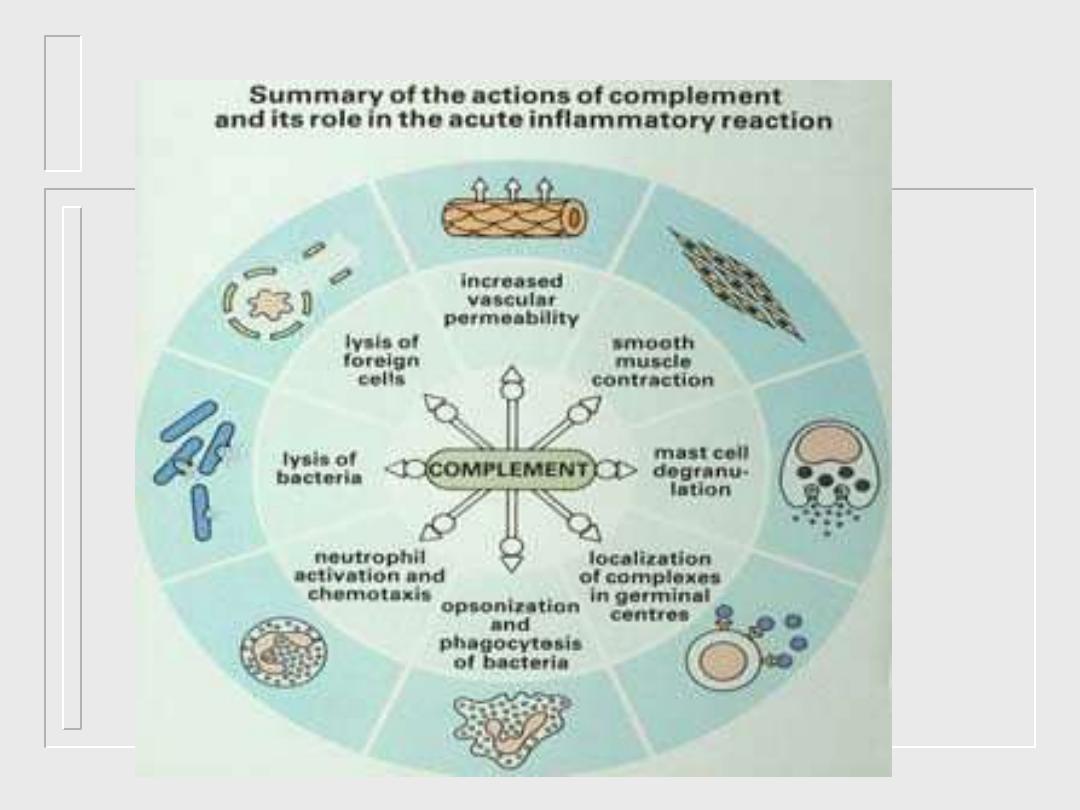

Proteins of the complement
system
(nomenclature)
• C1(qrs), C2, C3, C4, C5, C6, C7, C8, C9
• factors B, D, H and I, properdin (P)
• mannose binding lectin (MBL), MBL associated
serine proteases (MASP-1 MASP-2)
• C1 inhibitor (C1-INH), decay accelerating
factor (DAF)

• C-activation:
alteration of C proteins such that they
interact with the next component
• C-fixation:
utilization of C by Ag-Ab complexes
• Convertase/esterase:
altered C-protein which acts
as a proteolytic enzyme for another C-component
Definitions

Activation product of complement
proteins (nomenclature)
When enzymatically cleaved,
the larger moiety,
binds to the activation complex or membrane
and the
smaller peptide is released in the
microenvironment
Letter “
b” is usually added to the larger,
membrane-binding
, peptide and
“a” to the
smaller peptide
(e.g., C3b/C3a, C4b/C4a,
C5b/C5a), EXCEPT C2 (the larger, membrane-
binding moiety is C2a; the smaller one is C2b)
Activated component are usually over-lined: e.g.
C1qrs
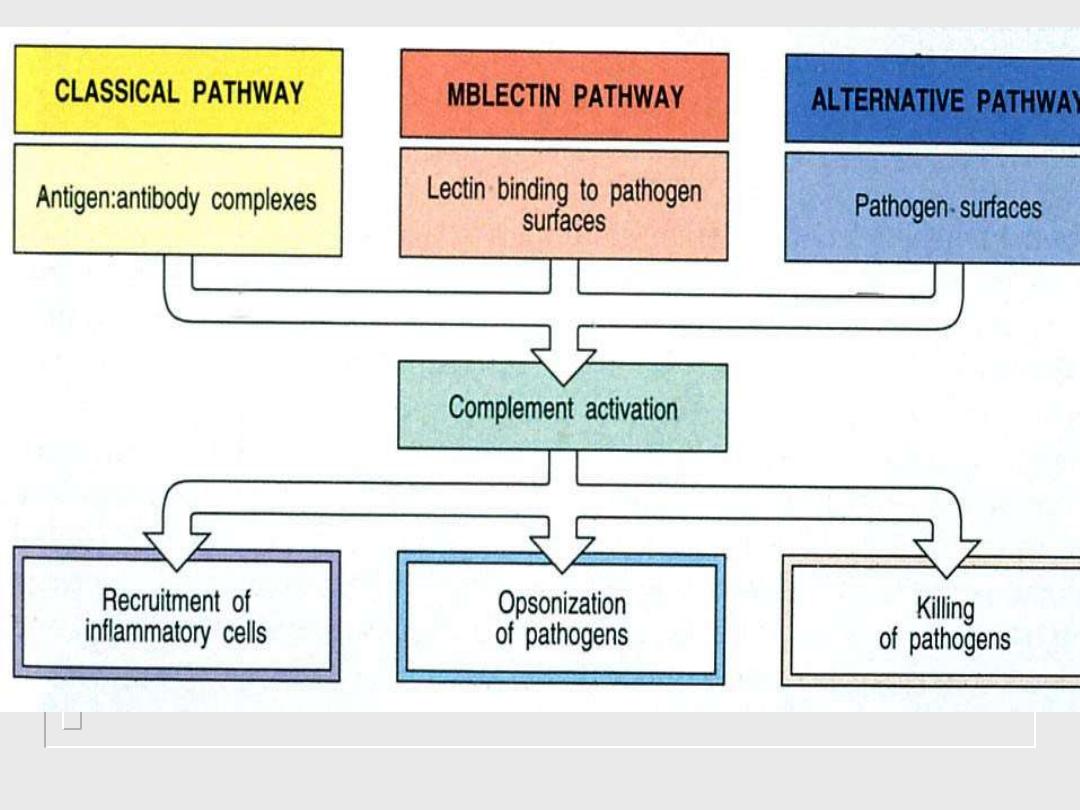

Pathways of complement
activation
CLASSICAL
PATHWAY
ALTERNATIVE
PATHWAY
activation
of C5
LYTIC ATTACK
PATHWAY
antibody
dependent
LECTIN
PATHWAY
antibody
independent
Activation of C3
and
generation of C5 convertase

THE CLASSICAL COMPLEMENT
PATHWAY
ƒ
Activated by Ag-Ab binding (can also
be activated by viruses, Mycoplasma
DNA).
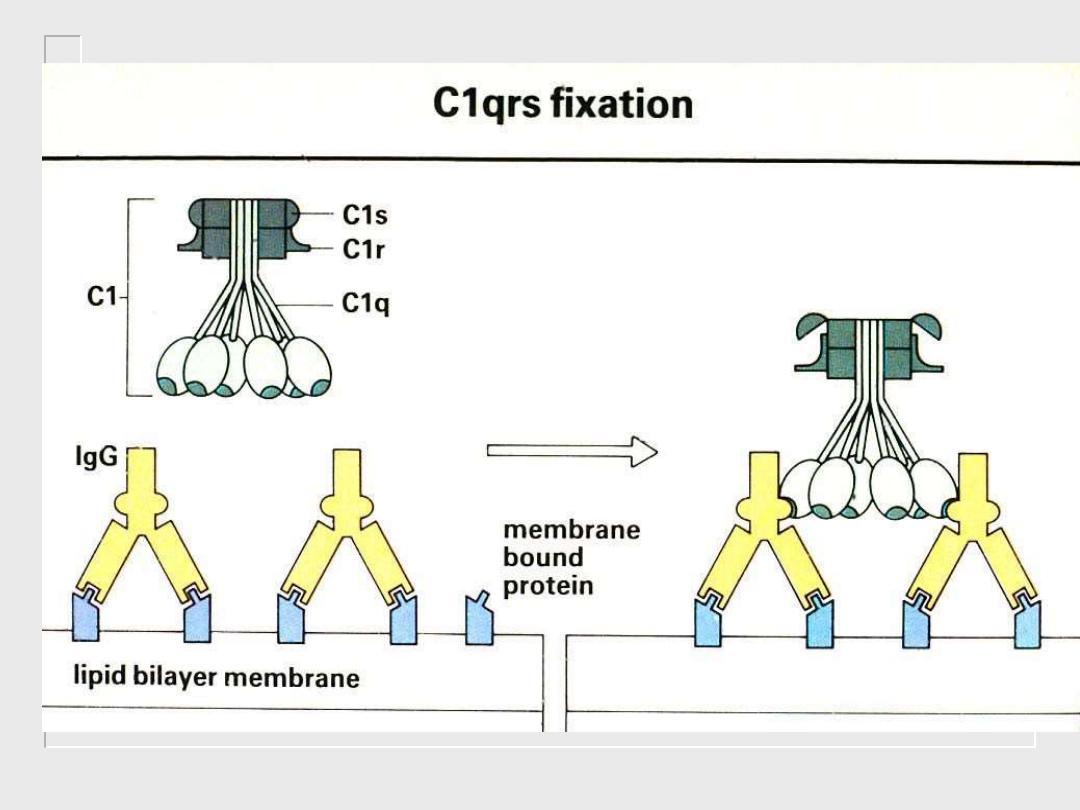

ƒ
One IgM molecule can stimulate C1 since it is a
pentamer with 5 Fc regions. At least 2 IgG
molecules are required to activate C1
.
ƒ
IgM more efficient complement binding (fixing)
antibody than IgG
.
IgA and IgE lack C1q receptors and cannot activate
complement.
ƒ
Only Ag-Ab complexes and not free or soluble Abs
activate complement.
ƒ
Activated C1q activates C1r which activates C1s.
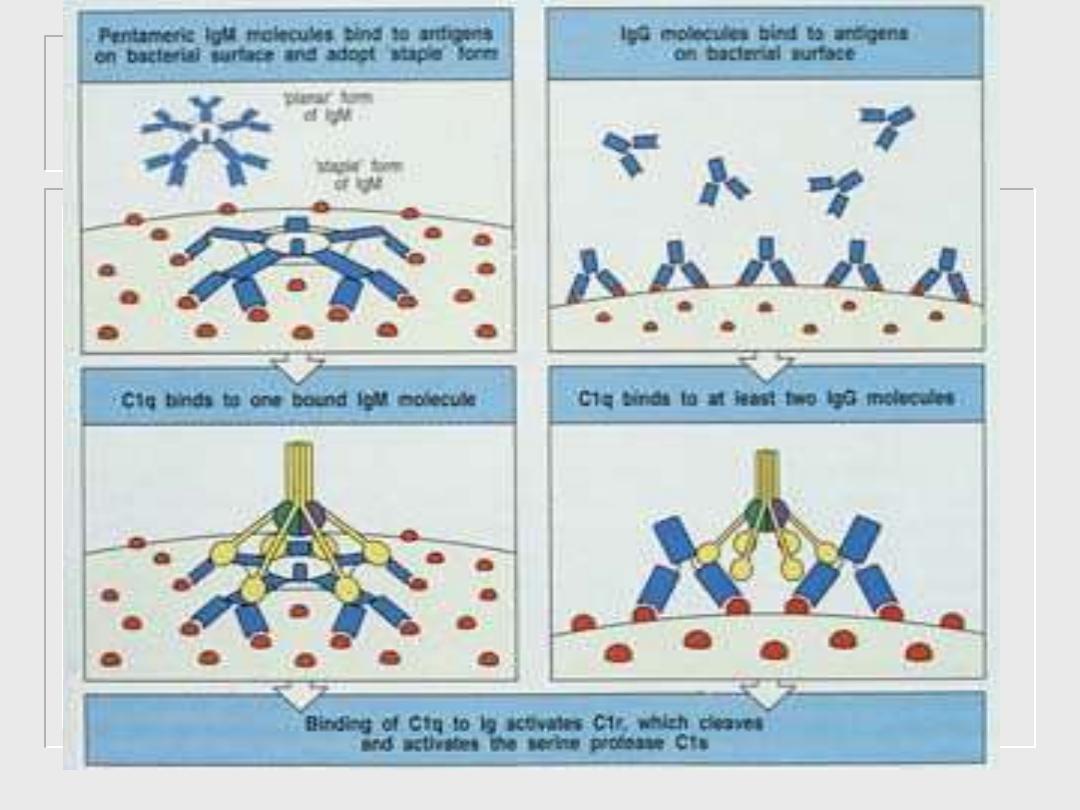

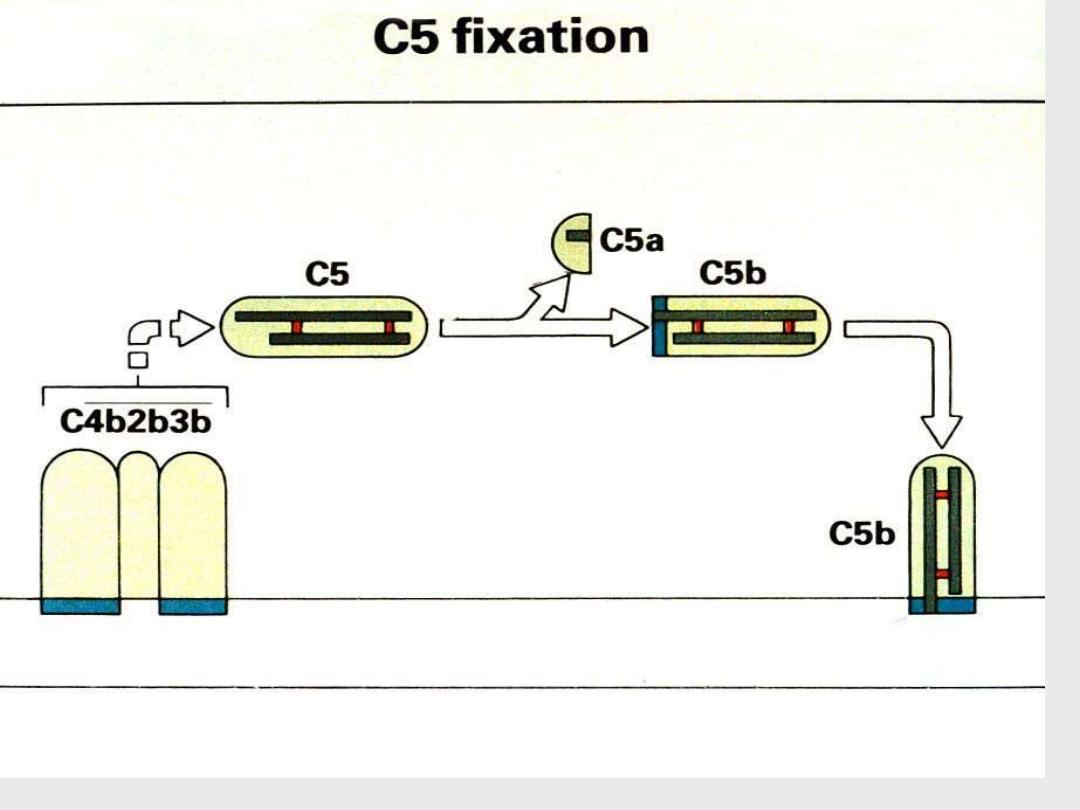
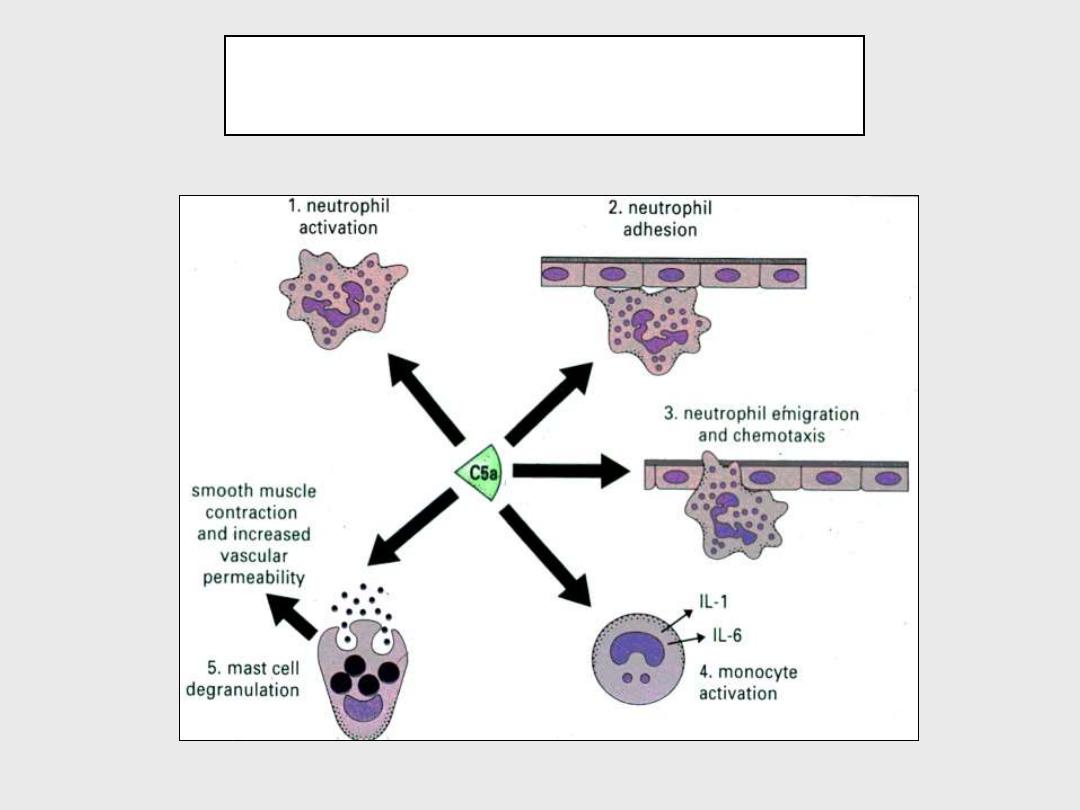
Biological effects of C5a
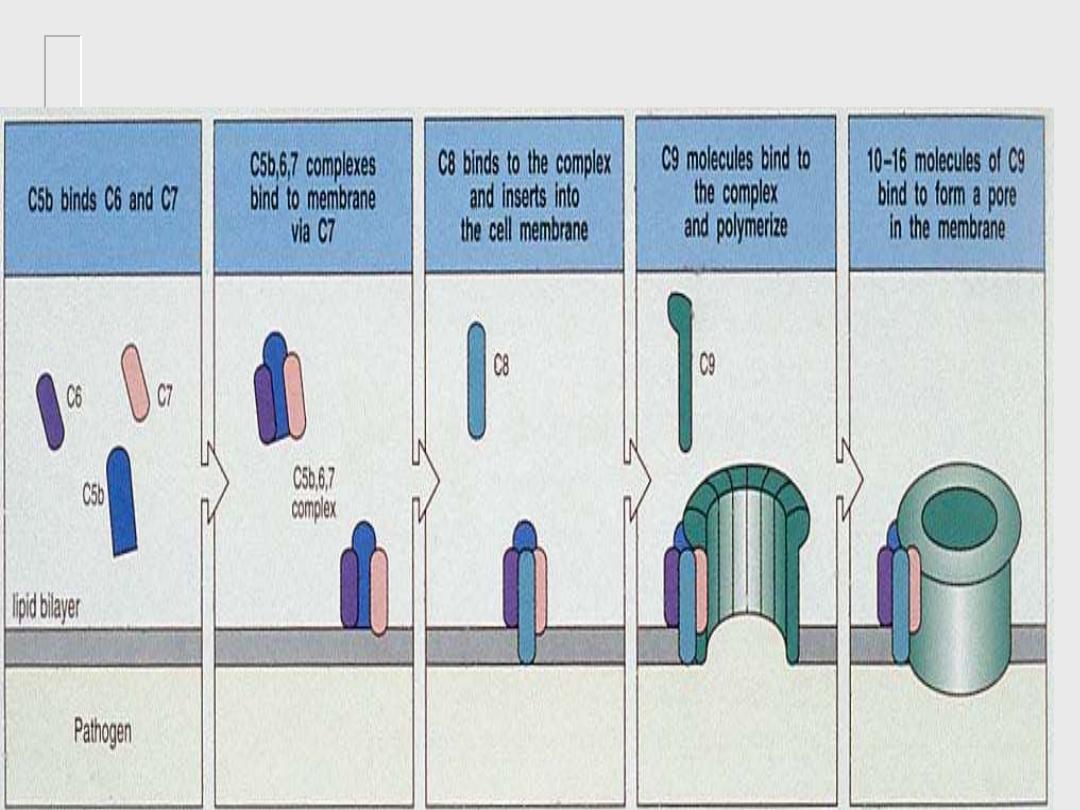
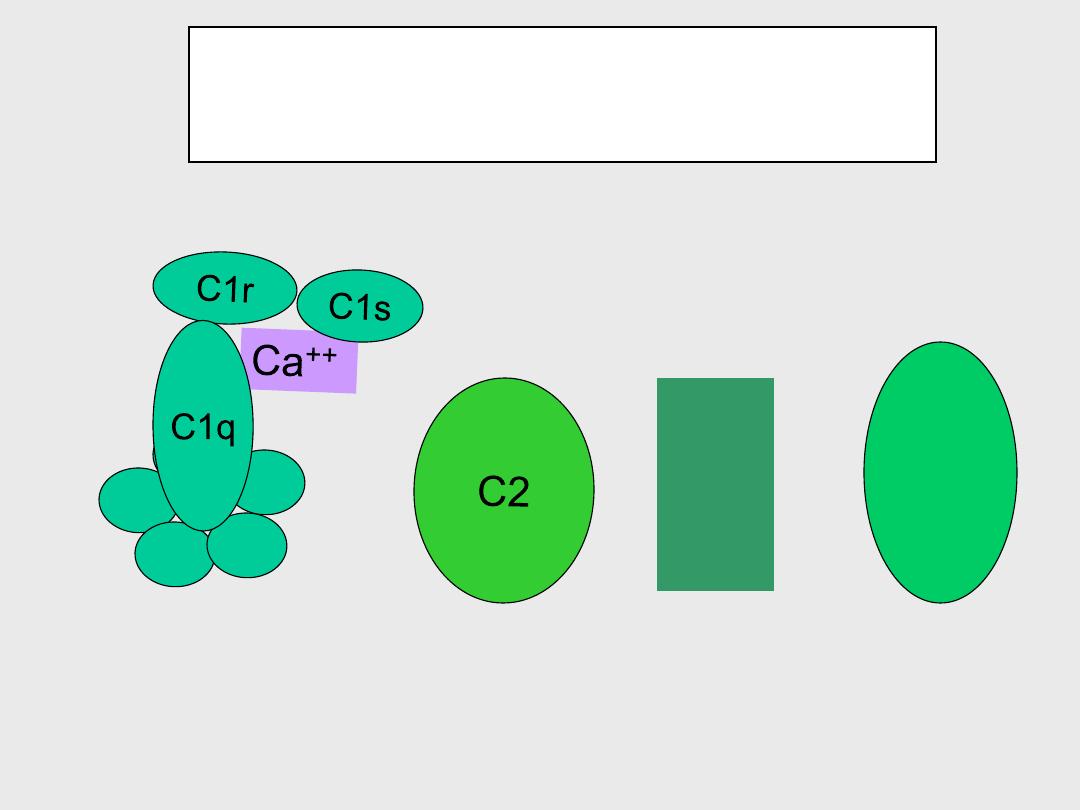
Components of the Classical
Pathway
C4
C3
C1 complex
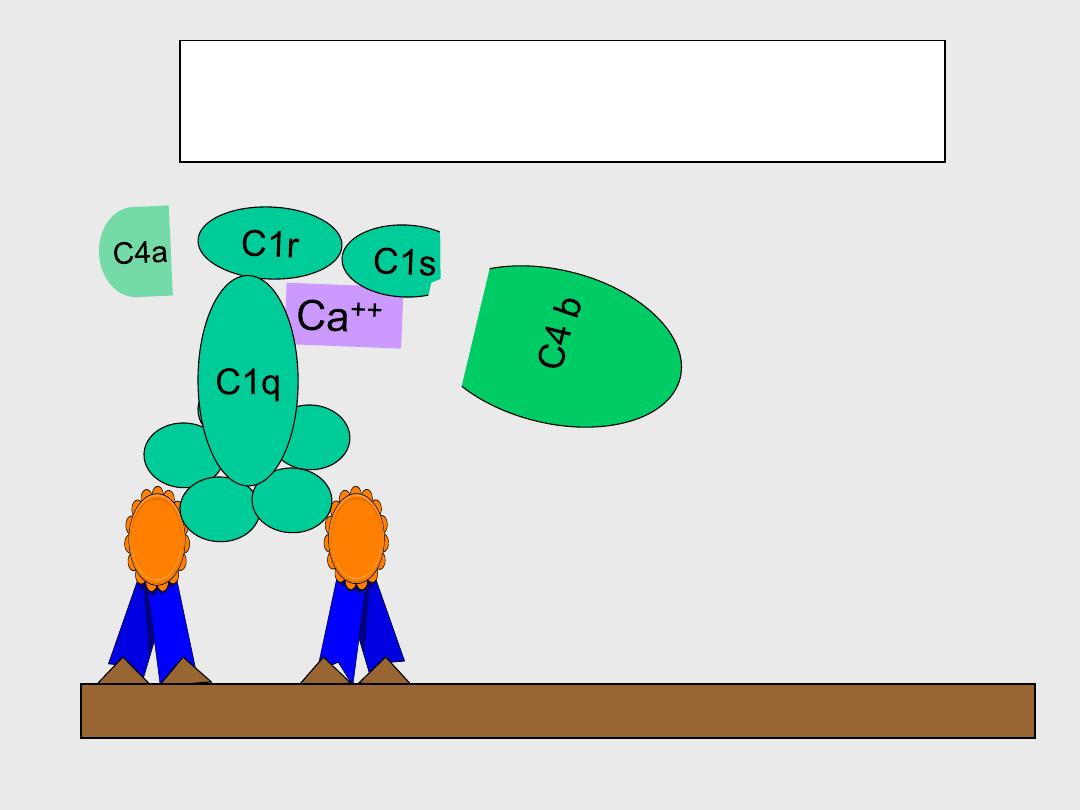
Classical Pathway
Generation of C3-convertase
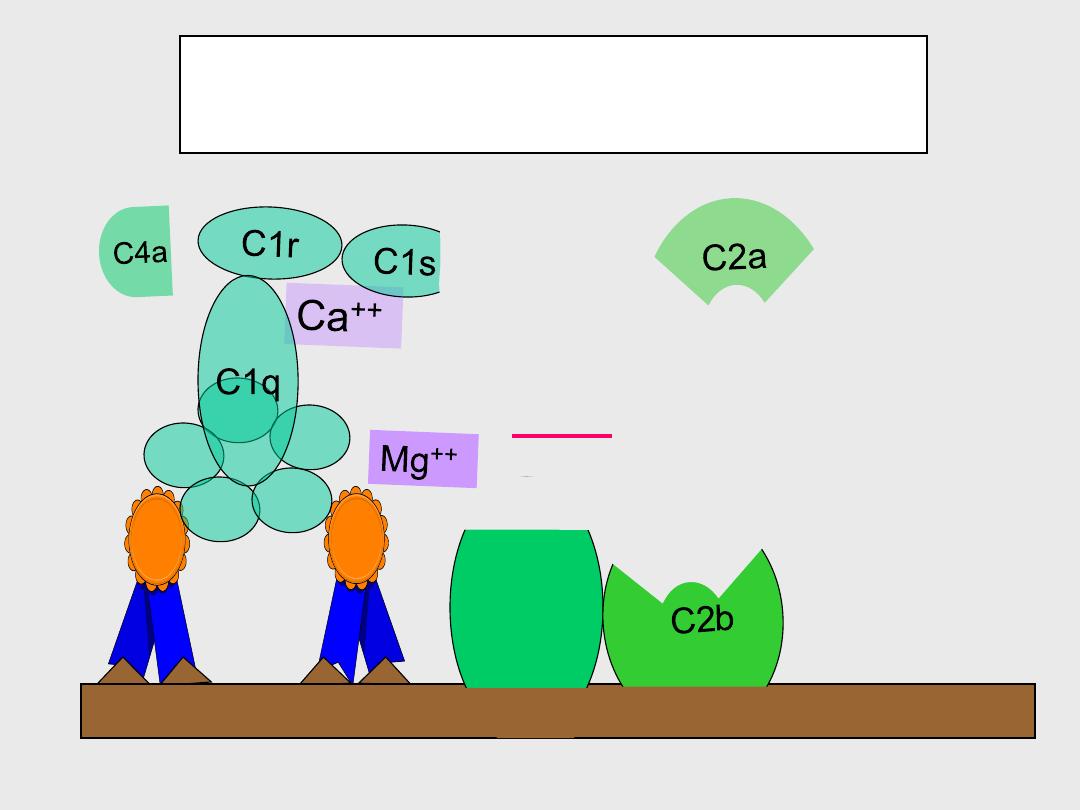
Classical Pathway
Generation of C3-convertase
C4b
_____
C4b2a is C3 convertase
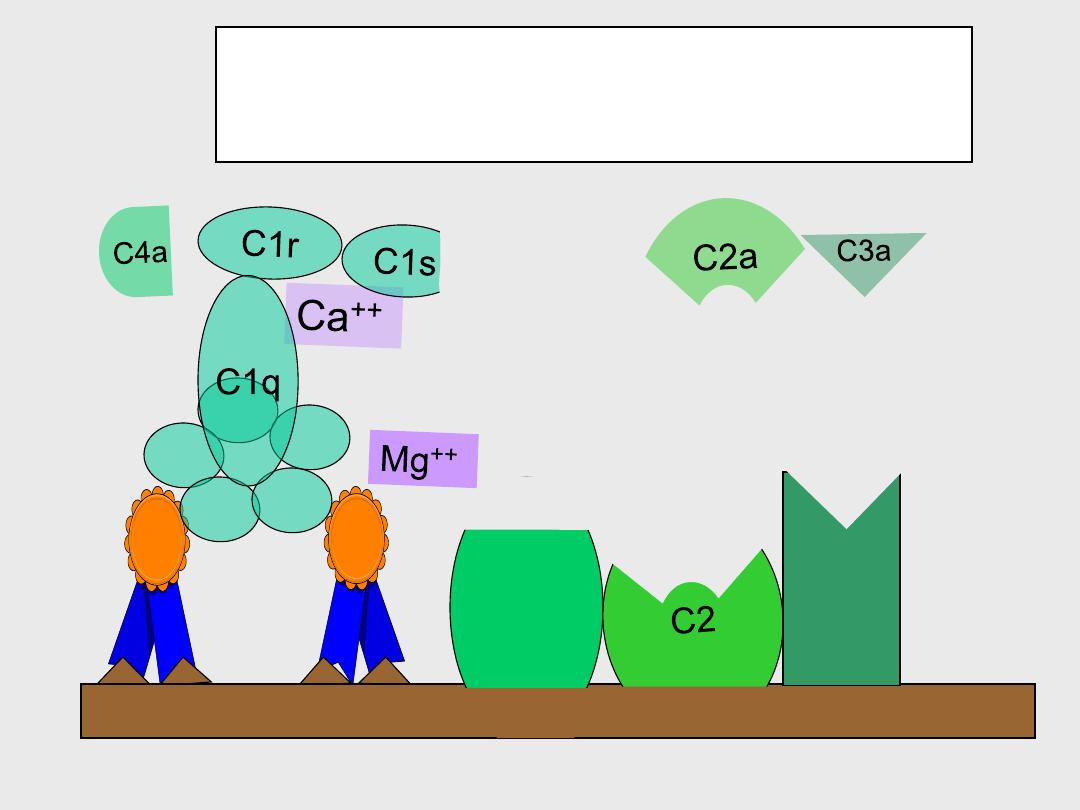
Classical Pathway
Generation of C5-convertase
C4b
C3
b
________
C4b2a3b is C5 convertase;
it leads into the Membrane
Attack Pathway
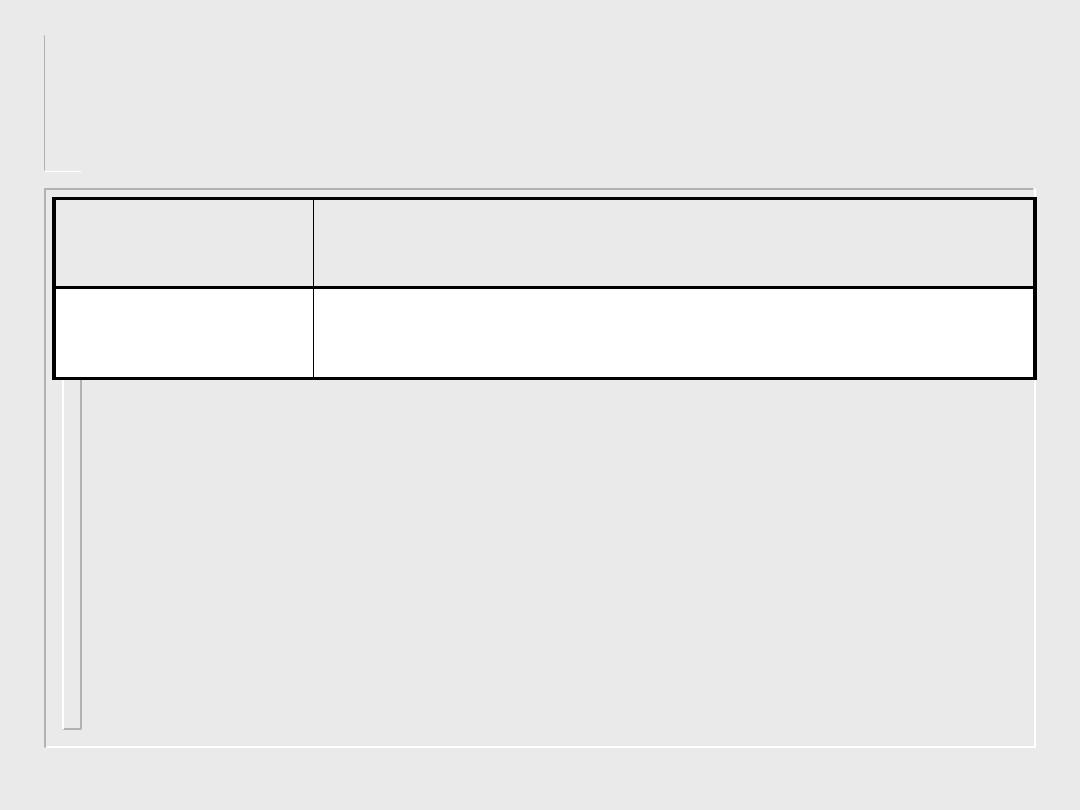
25
Control of Classical Pathway
Components
Component
Regulation
All
C1-inhibitor (C1-INH); dissociates C1r and C1s from
C1q
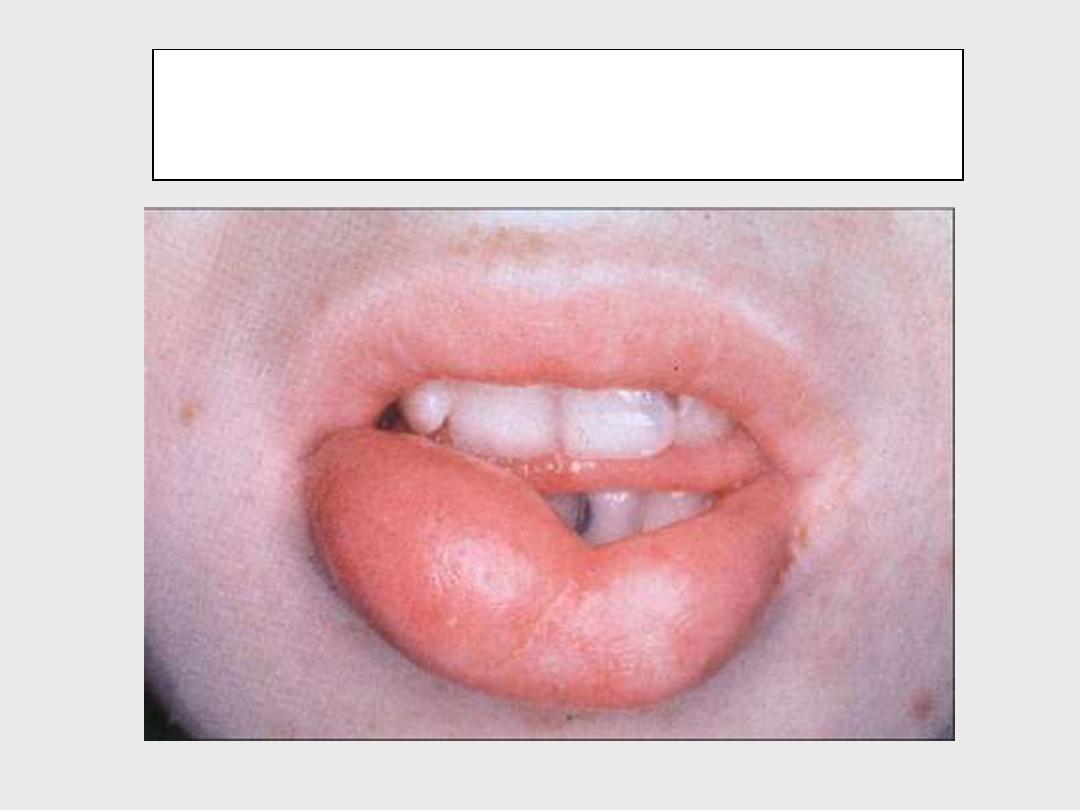
C1-inhibitor deficiency:
hereditary angioedema

Product
Biological Effects
Regulation
Biological properties of C-activation
products
C2a
(prokinin)
edema
C1-INH
C3a
(anaphylatoxin)
mast cell degranulation;
enhanced vascular
permeability;
anaphylaxis
(C3-INA)

Product
Biological Effects
Regulation
Biological properties of C-activation
products
as C3, but less
potent
(C3-INA)
C4a
(anaphylatoxin)
opsonization;
phagocytosis
C4b
(opsonin)
C3b
(opsonin)
opsonization;
phagocyte activation
factors H & I

30
Biological Activities of Classical
Pathway Components
Component
Biological Activity
C2a
Prokinin; cleaved by plasmin to yield kinin, which
results in edema
C3a
Anaphylotoxin; can activate basophils and mast
cells to degranulate resulting in increased vascular
permeability and contraction of smooth muscle cells,
which may lead to anaphylaxis
C3b
Opsonin
Activation of phagocytic cells
C4a
Anaphylaotoxin
C4b
Opsonin

Product
Biological Effects
Regulation
Biological properties of C-activation
products
anaphylactic as C3, but
much more potent;
attracts & activates PMN
causes neutrophil
aggregation, stimulation
of oxidative metabolism
and leukotriene release
C5a
(
chemotactic
factor
)
C5b67
protein-S
chemotaxis, attaches
to other membranes

MANNAN-BINDING LECTIN COMPLEMENT PATHWAY
ƒ
Activated by binding of a serum protein -mannose-binding
lectin (MBL) to mannose-containing proteins or
to carbohydrates on bacteria or viruses.
ƒ
Activates the classical pathway in an antibody and C1q-
independent manner
.
ƒ
MBL is structurally similar to C1q. Instead of C1r and C1s,
MBL associates with
mannose-binding lectin-associated
serum proteases (MASP-1 and MASP-2)
to activate C4 and
C2
ƒ
Activation by MBL:MASP complex generates C3 convertase
which progresses as in the classical pathway to produce the
membrane attack complex.
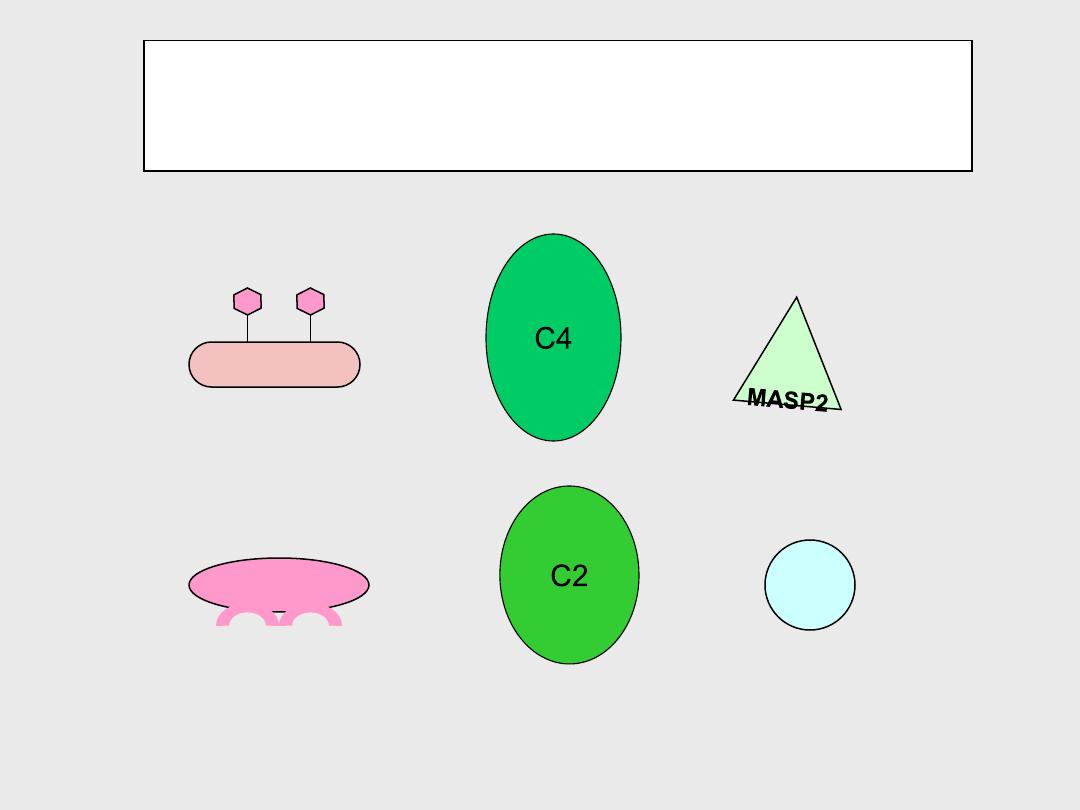
Components of mannose-binding
lectin pathway
MBL
MASP1
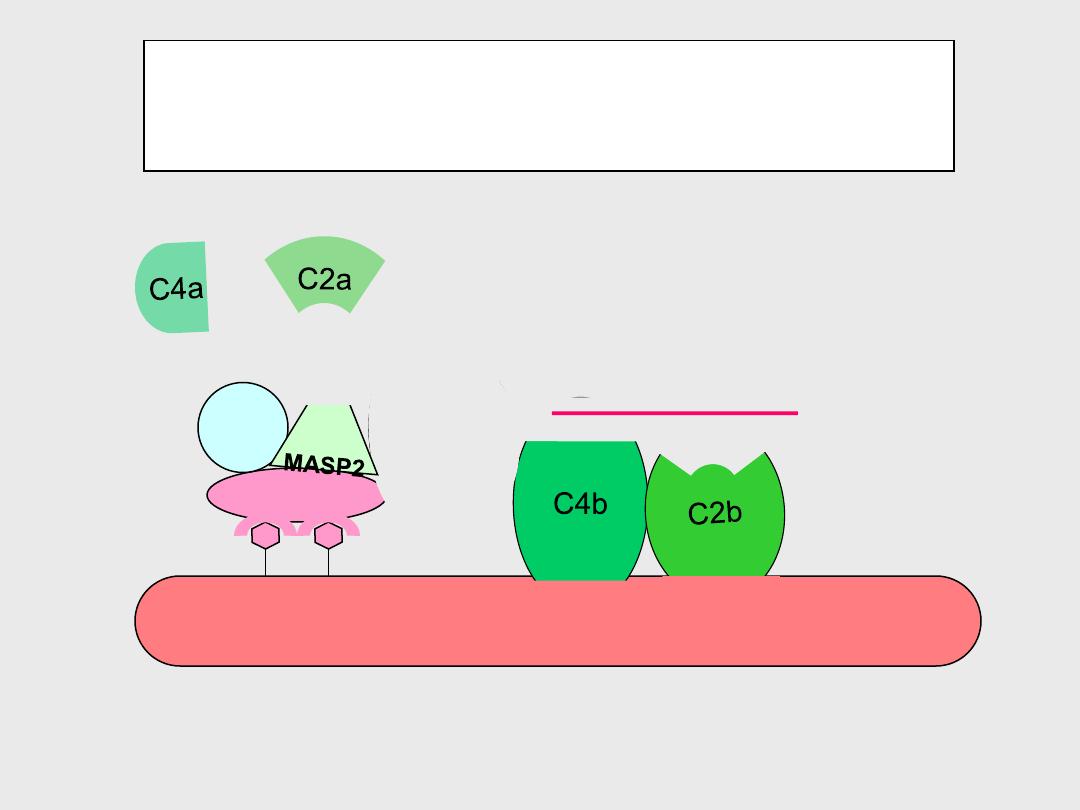
Mannose-binding lectin pathway
MBL
_____
C4b2a is C3 convertase; it
will lead to the generation of
C5 convertase
MASP1

THE ALTERNATIVE COMPLEMENT
PATHWAY
ƒ
Activated in the absence of antibody.
except (IgA)
ƒ
Activated by bacterial
products (lipopolysaccharide {LPS}) , cell wall
(teichoic acid of Gram+ bacteria), yeast and
fungal cell wall (zymosan), viruses, parasites
(trypanosomes).
ƒ
Depends on the presence of small amounts
of C3b in serum due to proteolysis of C3 by
plasmin or thrombin
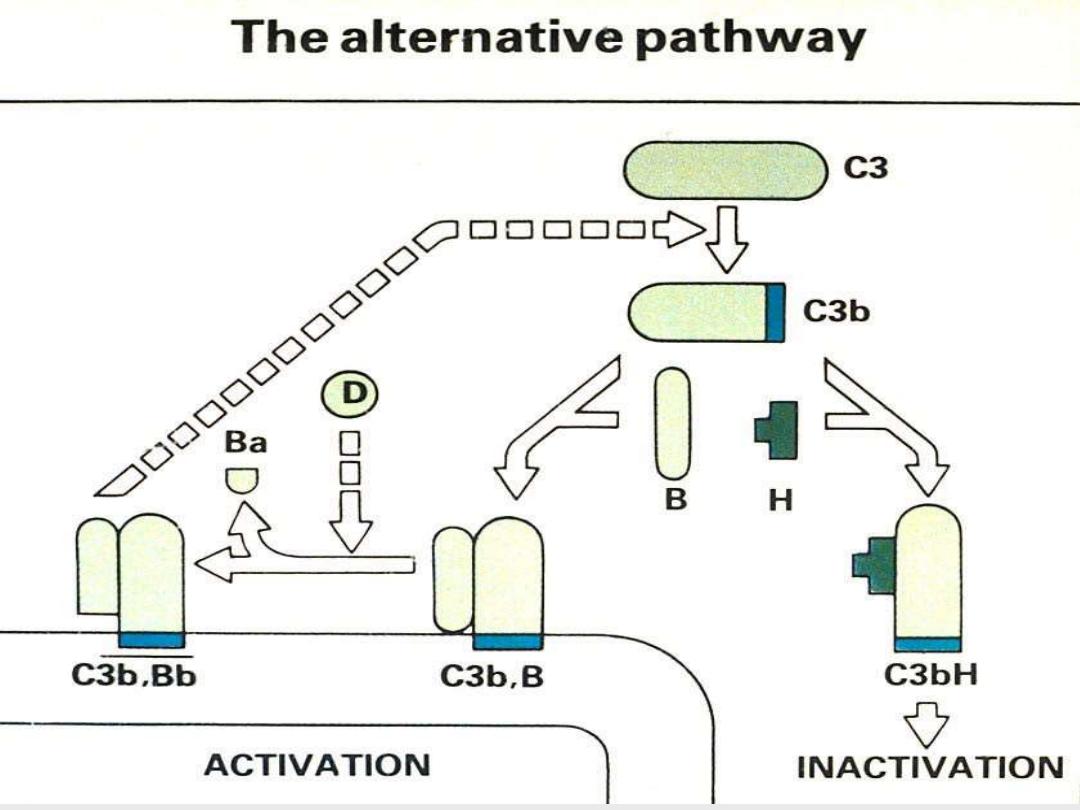
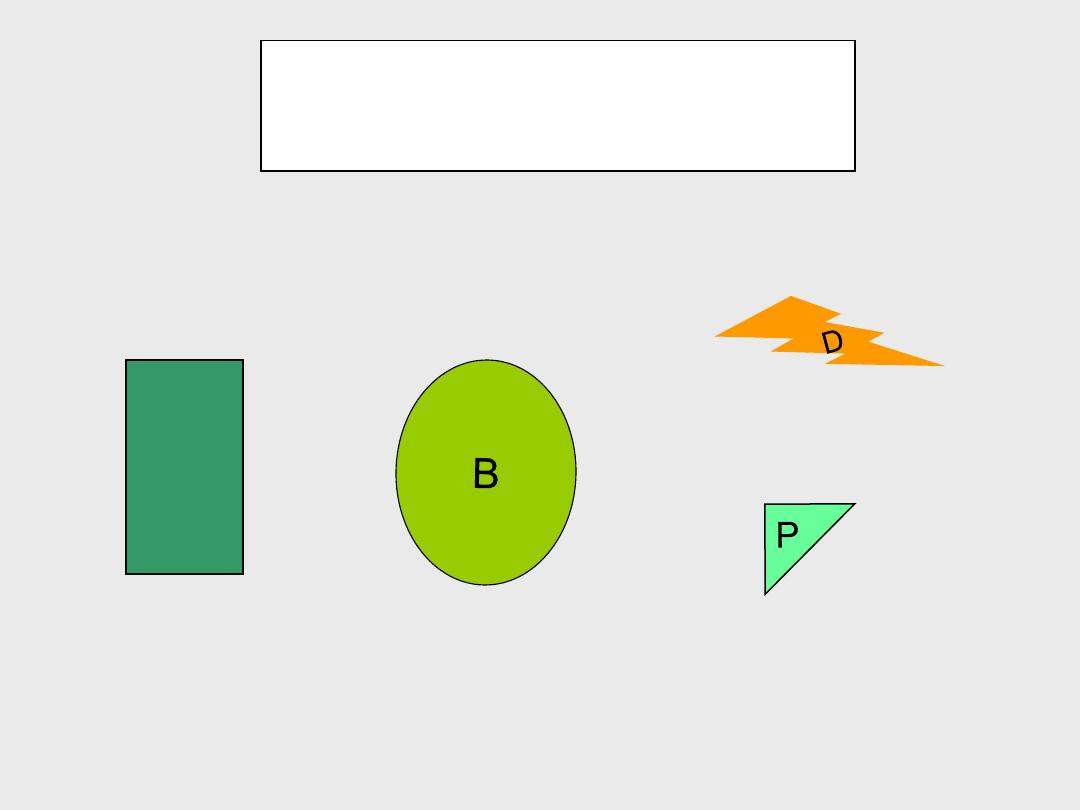
Components of the
alternative pathway
C3
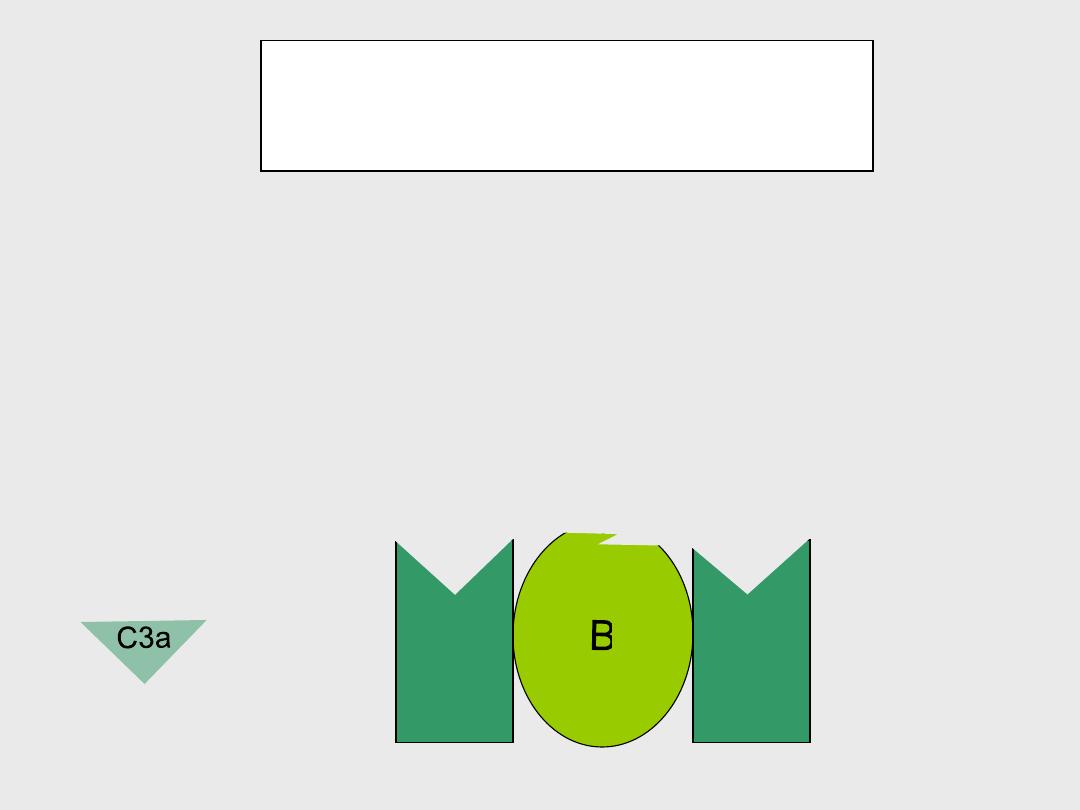
b
C3b
C3-activation
the amplification loop
C3
b
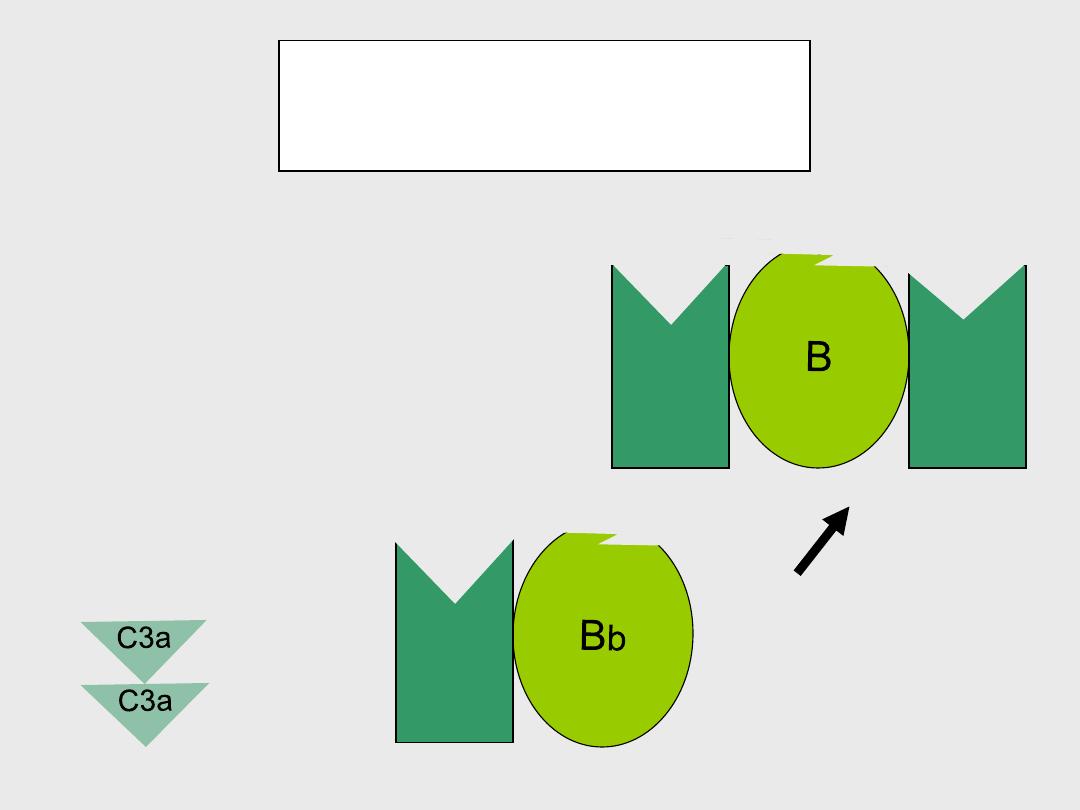
C3b
C3
b
C3-activation
the amplification loop
C3b
b
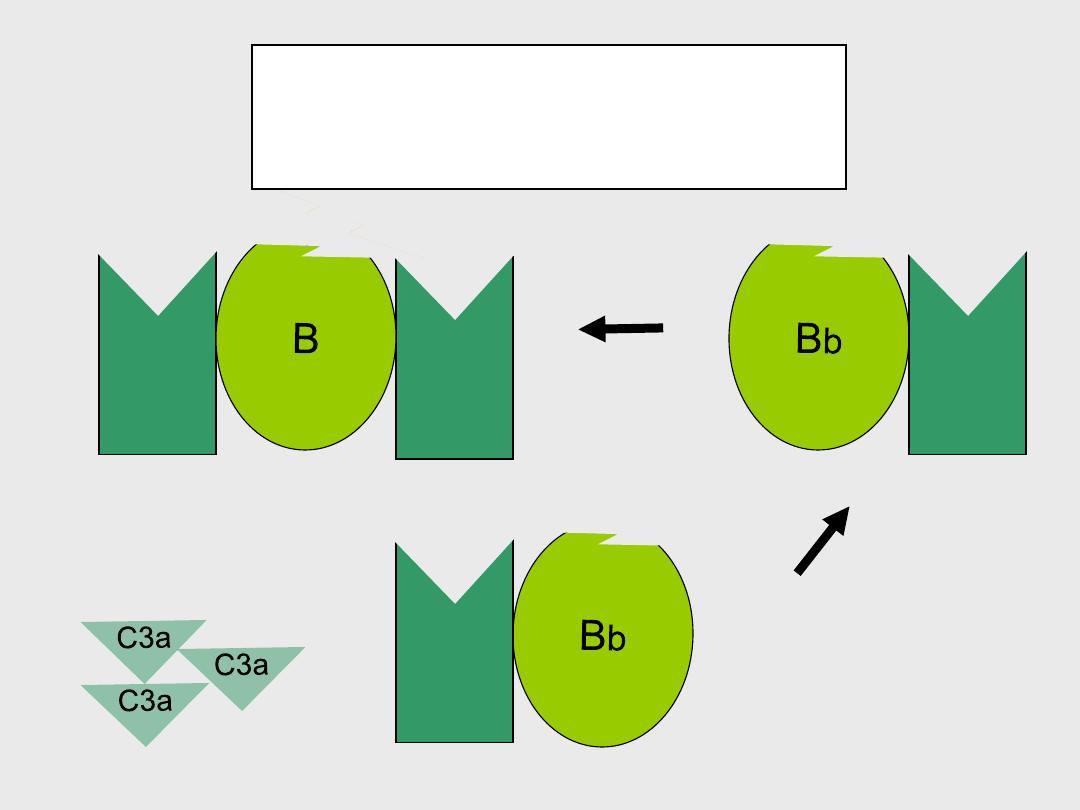
C3b
C3b
C3
b
b
C3-activation
the amplification loop
C3b
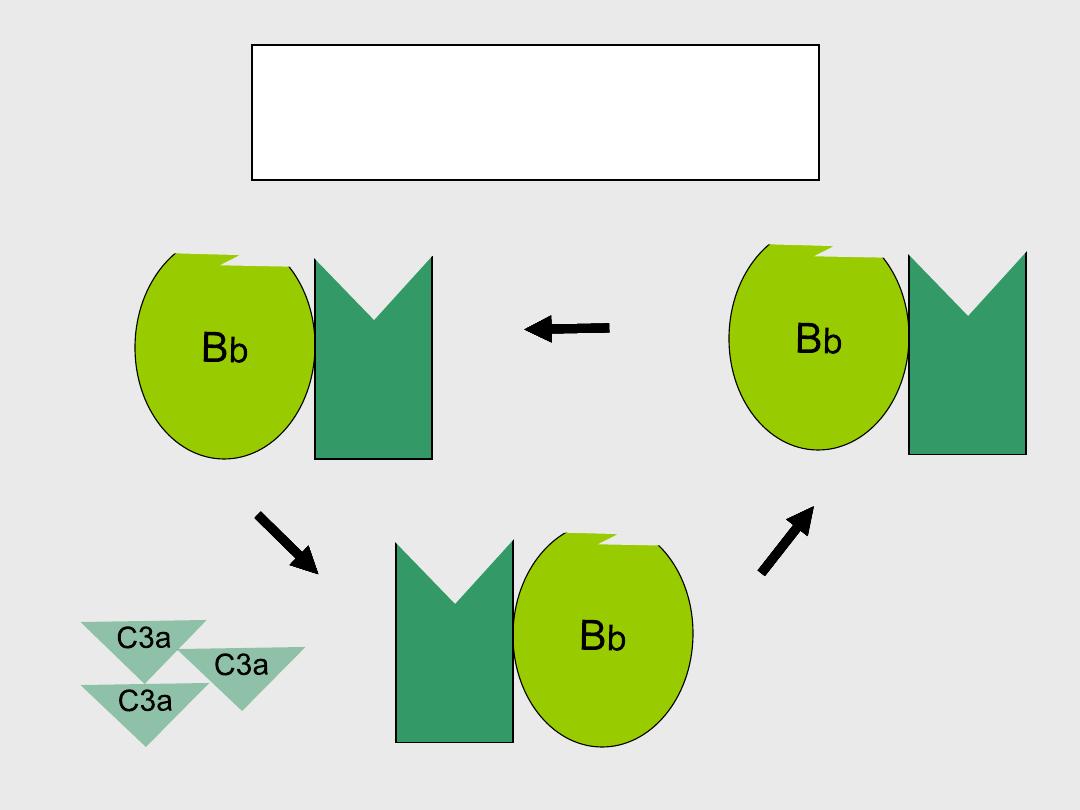
C3b
C3-activation
the amplification loop
C3b
C3b
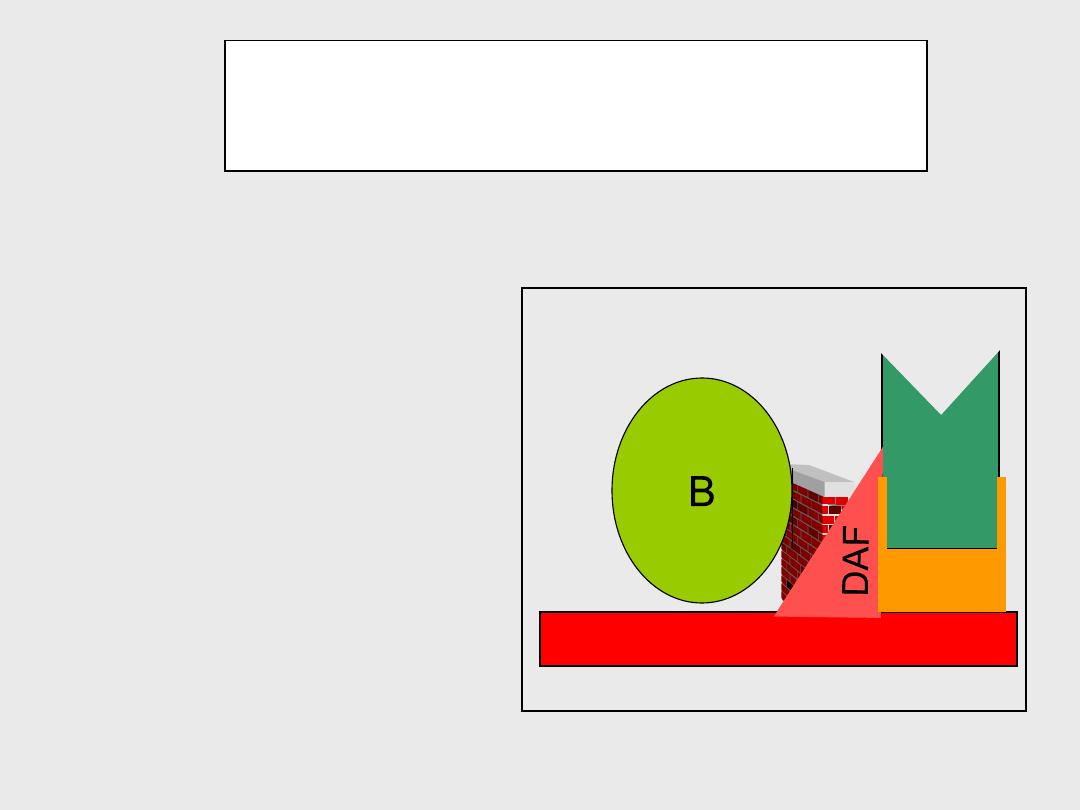
Control of spontaneous
C3 activation via DAF
C3b
DAF prevents
the binding of
factor B to C3b
Autologous cell membrane
CR1
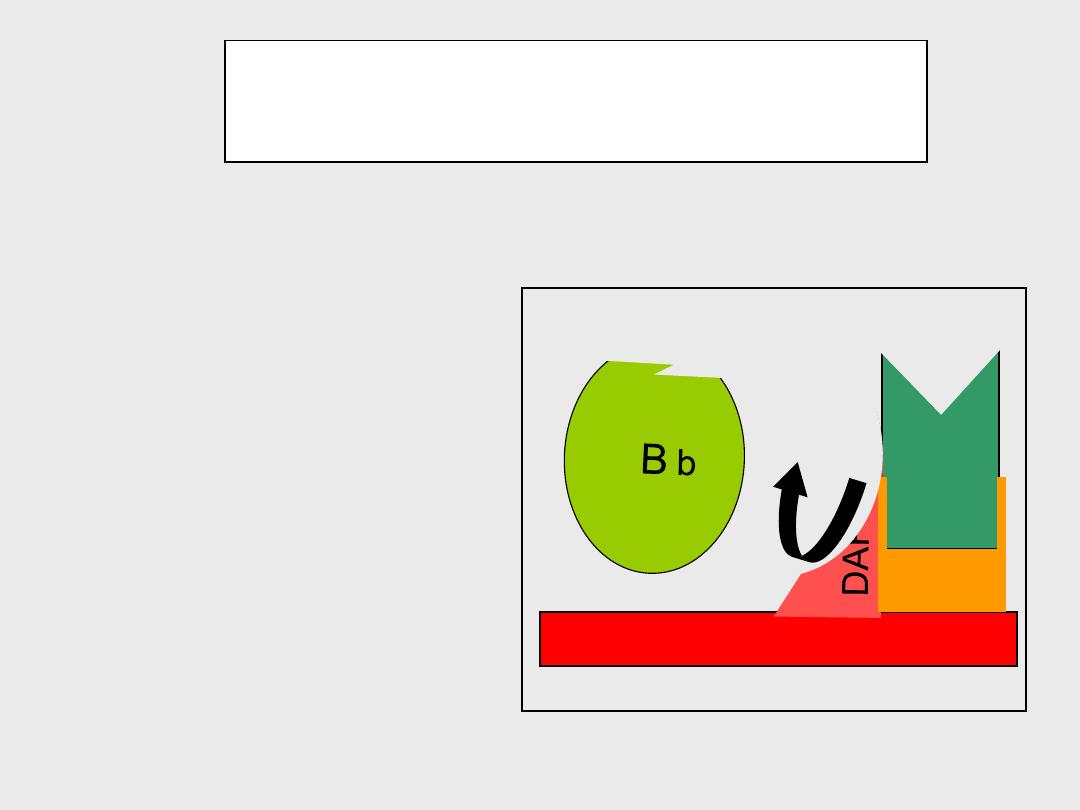
Control of spontaneous
C3 activation via DAF
DAF dislodges
C3b-bound
factor Bb
b
b
C3b
Autologous cell membrane
CR1
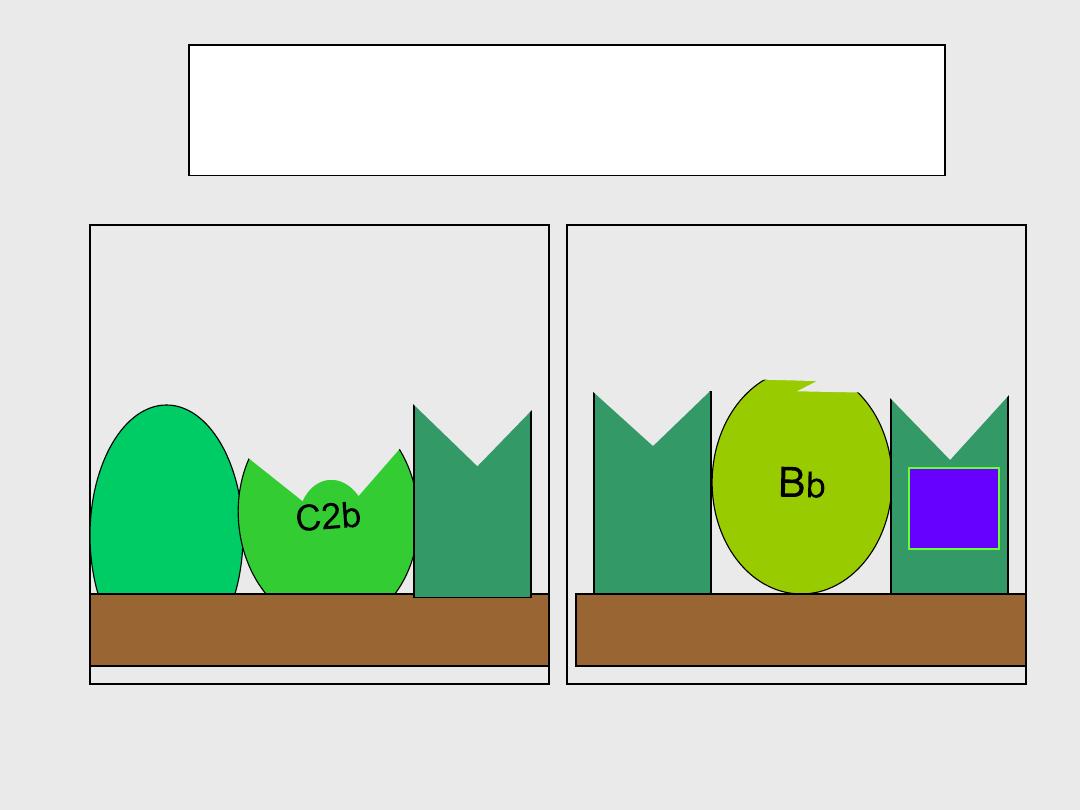
C5-convertase of the two
pathways
C3b
C3b
C5-convertase of the
Alternative Pathway
C4b
C3b
C5-convertase of the
Classical and lectin
Pathways
Properdin

Generation of C5 convertase
leads to the activation of the
Lytic pathway
Lytic pathway
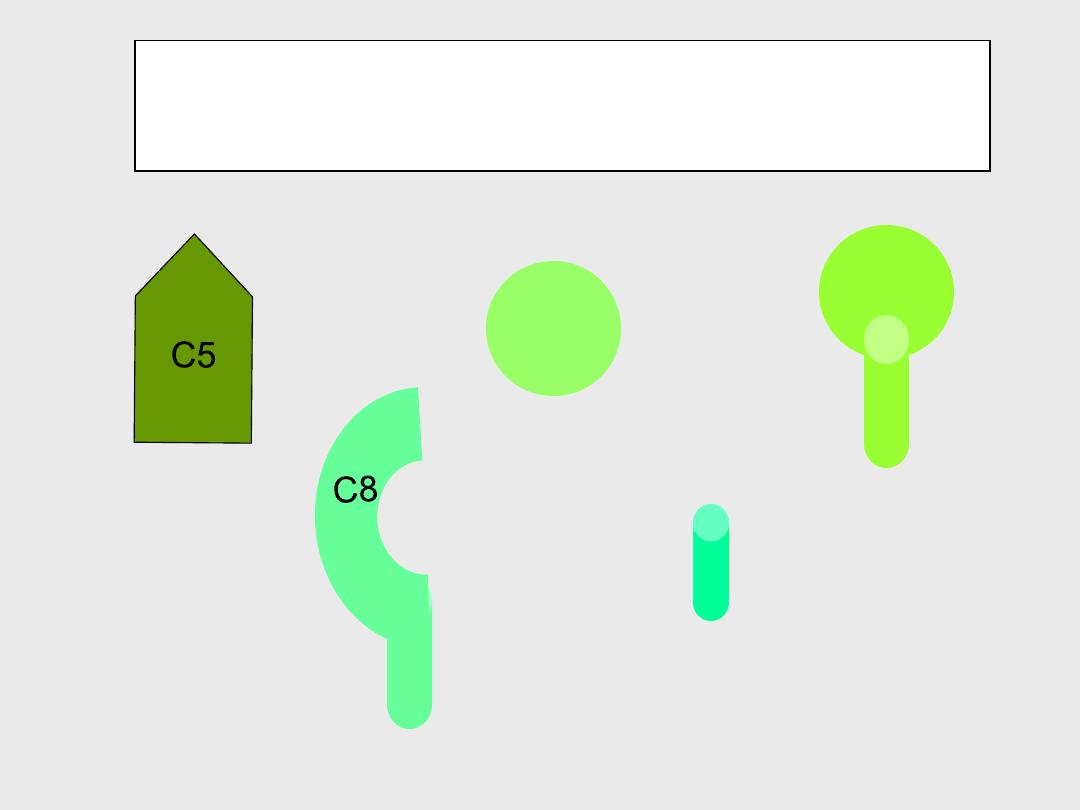
Components of the lytic pathway
C6
C
9
C7
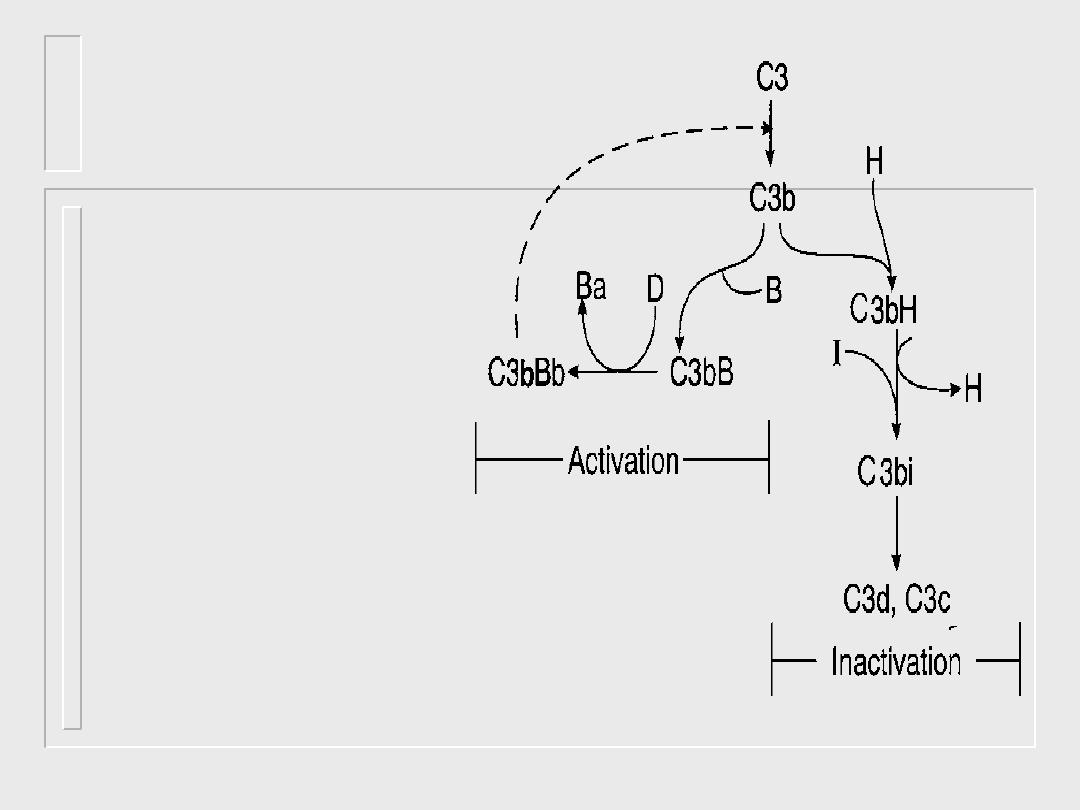
ALTERNATIVE
PATHWAY
ƒ
Factor H binds to
C3b preventing binding
of Factor B and renders
it (C3b) susceptible to
cleavage by Factor I.
Also promotes
dissociation of B from
C3b.
.
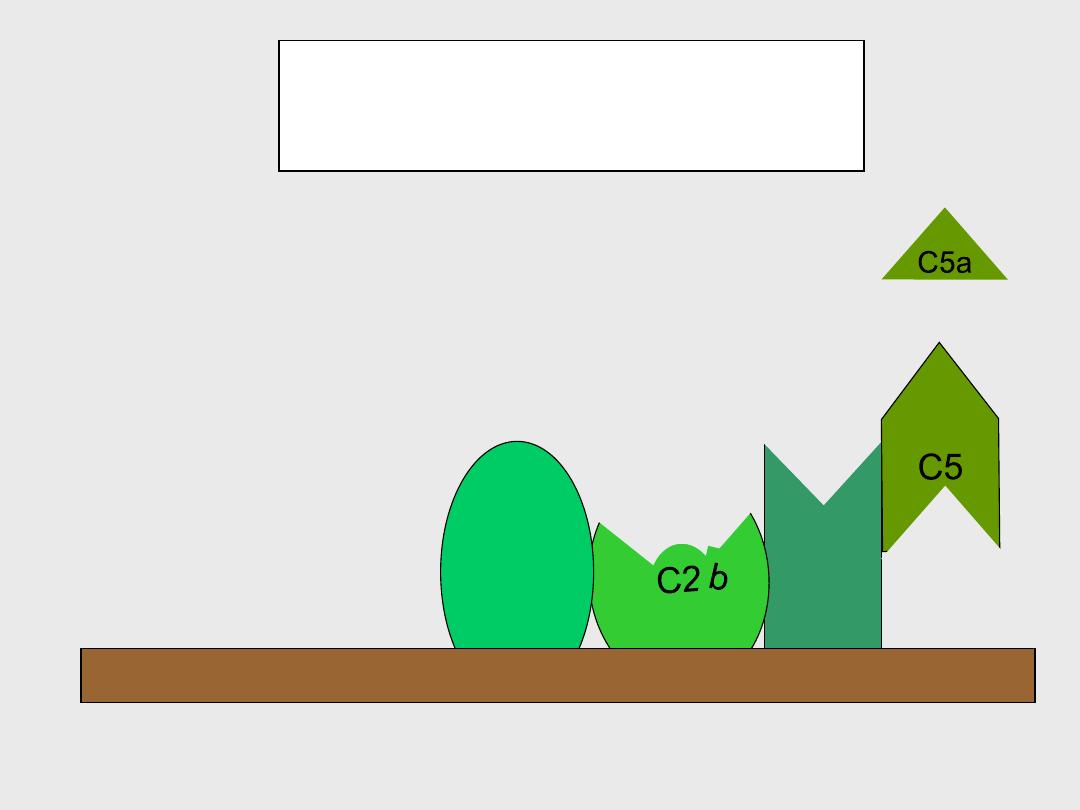
Lytic pathway
C5-activation
C3b
C4b
b

Lytic pathway
assembly of the lytic complex
b
C6
C7
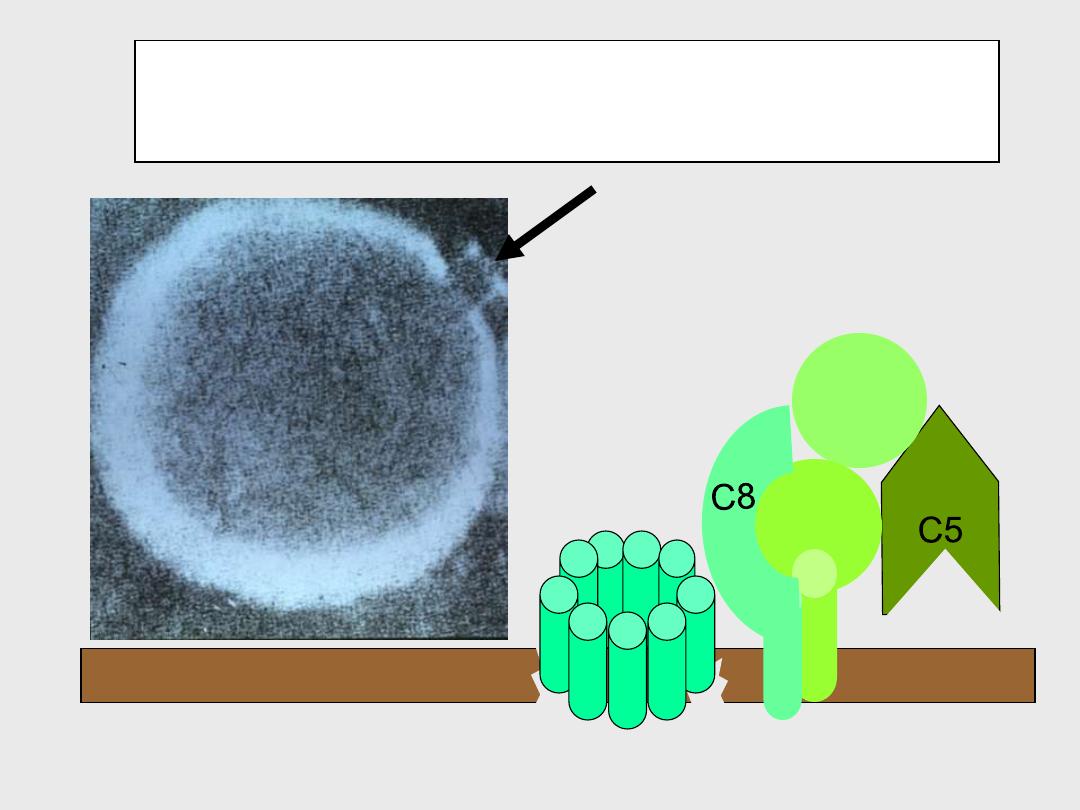
Lytic pathway:
insertion of lytic complex into cell membrane
b
C6
C7
C
9
C
9
C
9
C
9 C
9
C
9 C
9
C
9
C
9

CLASSICAL PATHWAY
1. INHIBITION OF PROTEOLYTIC
ACTIVITY OF C1
•
C1 inhibitor (C1INH), a serine protease
inhibitor, binds to and inactivates C1r, C1s.
ƒ
Most of the C1 in blood is bound to C1 INH to
prevent spontaneous complement activation.
Binding of C1q to Ag-Ab complex releases C1
from C1 INH inhibition
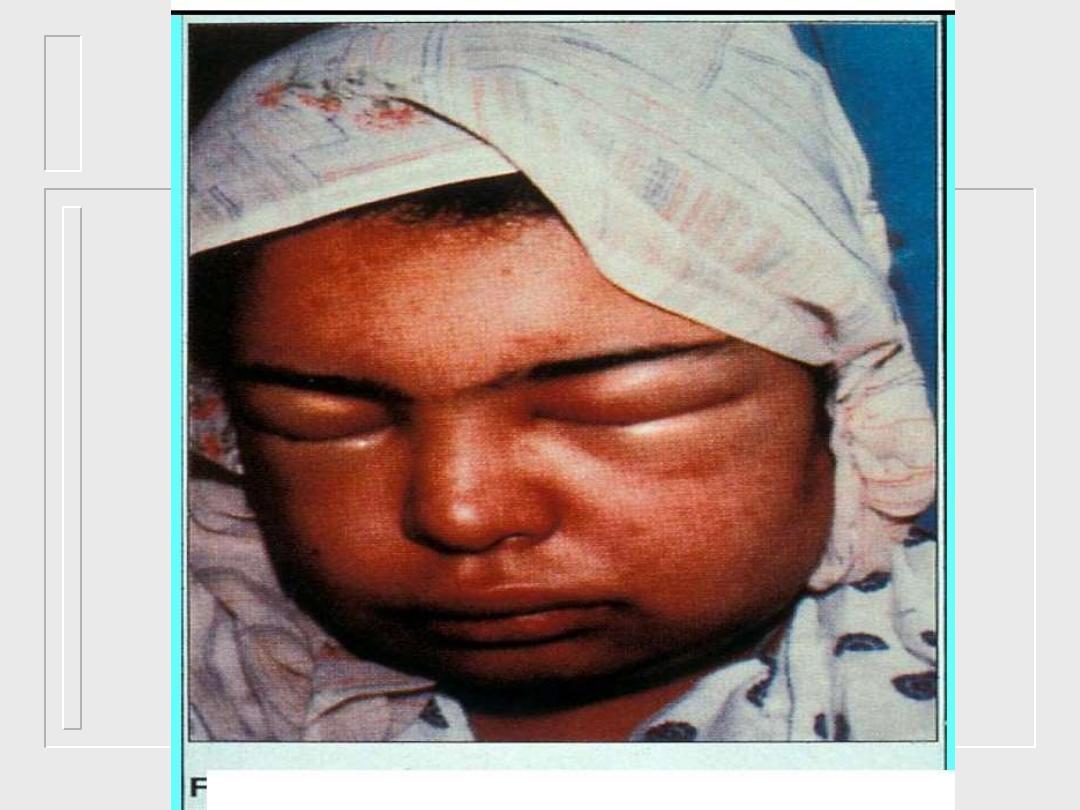

54
Control of Classical Pathway
Components
Component
Regulation
All
C1-inhibitor (C1-INH); dissociates C1r and C1s from
C1q
C3a
C3a-inactivator (C3a-INA; Carboxypeptidase B)
C3b
Factors H and I; Factor H facilitates the degradation
of C3b by Factor I
C4a
C3a-INH

Product
Biological Effects
Regulation
Biological properties of C-activation
products
C2b
(prokinin)
edema
C1-INH
C3a
(anaphylatoxin)
mast cell degranulation;
enhanced vascular
permeability;
anaphylaxis
(C3-INA)

Product
Biological Effects
Regulation
Biological properties of C-activation
products
as C3, but less
potent
(C3-INA)
C4a
(anaphylatoxin)
opsonization;
phagocytosis
C4b
(opsonin)
C3b
(opsonin)
opsonization;
phagocyte activation
factors H & I

57
Complement Deficiencies and Disease
Classical Pathway
Pathway Component
Disease
Mechanism
C1INH
Hereditary
Angioedema
Overproduction of C2b
(prokinin)
C1, C2, C4
Predisposition
to SLE
Opsonization of immune
complexes help keep
them soluble, deficiency
results in increased
precipitation in tissues
and inflammation

Product
Biological Effects
Regulation
Biological properties of C-activation
products
anaphylactic as C3, but
much more potent;
attracts & activates PMN
causes neutrophil
aggregation, stimulation
of oxidative metabolism
and leukotriene release
C5a
(
chemotactic
factor
)
(C3a-INA)
C5b67
protein-S
chemotaxis, attaches
to other membranes

59
Complement Deficiencies and Disease
Alternative Pathway
Pathway/Component
Disease
Mechanism
Factors B or D
Susceptibility
to pyogenic
(pus-forming)
bacterial
infections
Lack of sufficient
opsonization of bacteria
C3
Susceptibility
to bacterial
infections
Lack of opsonization and
inability to utilize the
membrane attack pathway
C5, C6, C7 C8, or
C9
Susceptibility
to Gram-
negative
infections
Inability to attack the outer
membrane of Gram-
negative bacteria
